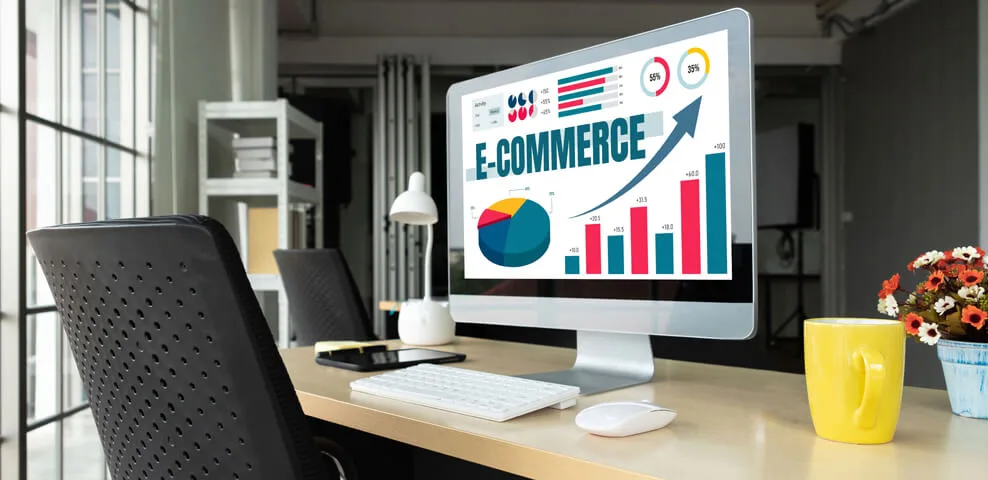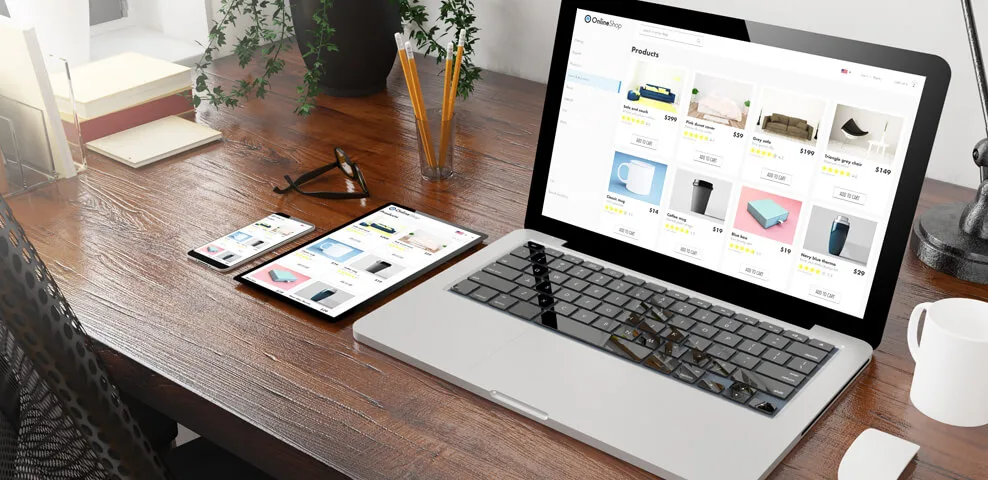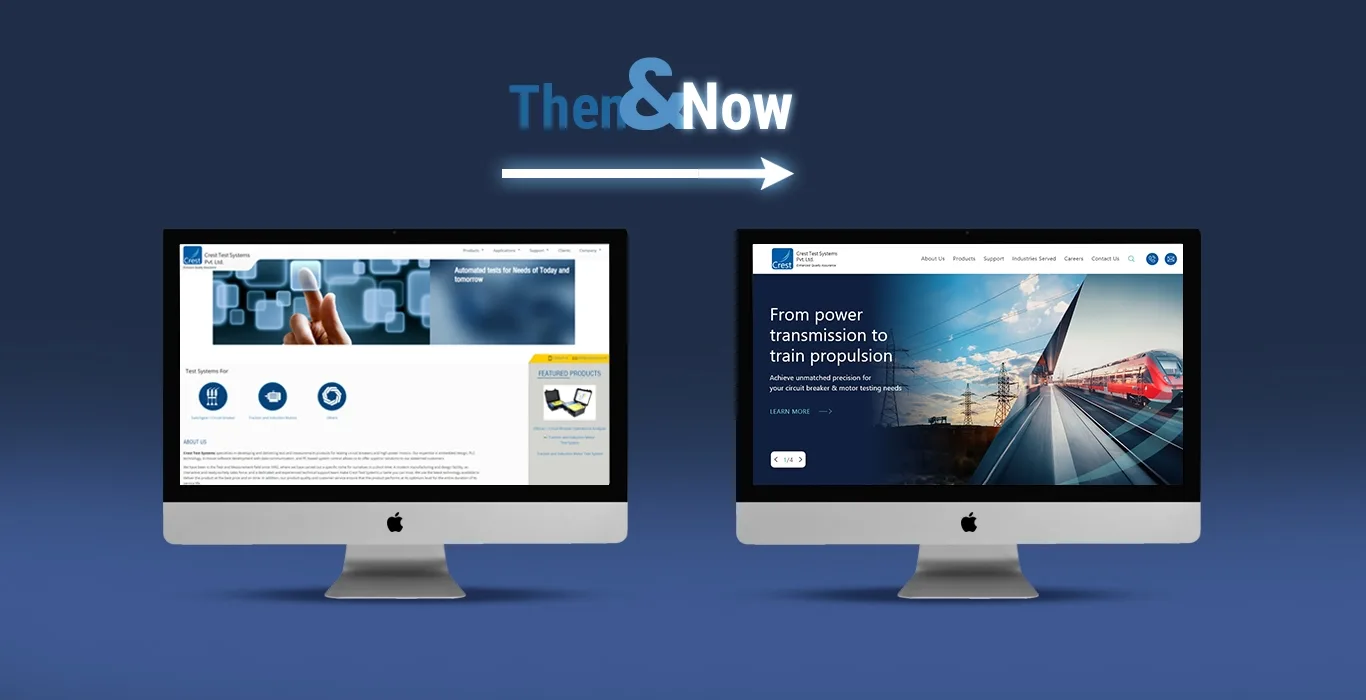4 min read
When I’m browsing online, whether to shop or research something, I always notice how a website looks and functions. If it’s hard to navigate or looks outdated, I tend to lose trust in the company and its offerings. And I’m not the only one. Nearly half of people consider a website’s design as the most important factor in judging a company’s credibility. Plus, over a third of users will leave a site if it doesn’t look appealing.

The Indian e-commerce market is on the rise. With lakhs of people shopping online every day, it presents a fantastic opportunity for businesses of all sizes to have a piece of the cake. But in such a competitive marketplace, how do you make your online store stand out and convince customers? Well, the answer lies in your e-commerce website design.
For businesses, especially those in e-commerce, having a well-designed e-commerce website, with a user-friendly interface, payment gateway integration and product page optimisation is crucial for gaining trust and maximising sales.
In this blog, we will look into key design tips to help you maximise sales on your e-commerce website:
Put Your Best Foot Forward
Just like your favourite shoe store puts its top sellers front and centre, your website should do the same. These could be your most popular items, customer favourites, or products that bring in the most profit. Draw attention to them using bold colours, eye-catching images, or special banners. Think of it as creating a virtual display that entices customers to explore further. The easier it is for them to find your top picks, the more likely they are to make a purchase.
Use High-Quality Images and Video
They say a picture is worth a thousand words, and that’s especially true for e-commerce in India. Since customers can’t physically touch your products, high-resolution images are essential. Focus on clear, well-lit photos that showcase every detail. Consider including multiple images per product, or even a slideshow, to give customers a 360-degree view and a better understanding of what they’re buying. This is particularly helpful for clothing items where customers want to see how the product looks in action. Remember, your website should revolve around stunning visuals that bring your products to life.
Don't Design a Puzzle
While a minimalist design is great, clear navigation for an e-commerce website is even more important. A confusing website layout can leave customers feeling lost and frustrated, leading them to leave their shopping carts. Especially on sites with a wide variety of products, make sure your menus are clear and easy to understand. Use simple labels that your target audience will recognise, like “Main Menu,” “Clothing,” etc. Organize your product pages logically as well, so customers can easily find what they’re looking for and complete their purchases without getting lost in the maze.

Product Page Optimisation is Vital
Product pages are where the real magic happens. This is where you convince potential consumers to hit that ‘buy’ button. As one of the leading e-commerce website design company in India, we recommend our clients include detailed product descriptions and highlight key features and benefits. Also, don’t forget clear pricing and availability information. Engagement also plays an important role in the overall development of an e-commerce website. Use positive customer reviews and ratings to build trust and encourage purchases.
Simple Checkout Process
Nobody likes a long and complicated checkout process. Make it easy for users to complete their purchases with a simple and secure checkout flow. Offer multiple payment gateway options, including popular methods like UPI and mobile wallets. Imply smart payment gateway integration for a faster and easier checkout process.
Conclusion:
By implementing these e-commerce website design tips, you can create an engaging and user-friendly online store that not only maximises sales but also improves customer satisfaction. Remember to regularly analyse user behaviour, gather feedback, and make improvements to keep your website competitive in the ever-evolving e-commerce landscape.
For professional assistance in designing and optimising your e-commerce website for maximum sales, contact I Knowledge Factory today.
FAQs
1. How important is the design of e-commerce website for maximizing sales?
The design of an e-commerce website is crucial for maximizing sales because it directly impacts user experience, trust, and engagement, leading to higher conversion rates.
2. How to optimize product pages for better sales?
To optimize product pages for better sales, focus on using high-quality images, clear product descriptions, compelling call-to-action buttons, customer reviews, and easy navigation to enhance user experience and encourage conversions.
3. Is mobile responsiveness important for e-commerce websites?
Yes, mobile responsiveness is crucial for e-commerce websites because a large number of users access online stores from mobile devices. Ensuring that the website is optimized for mobile screens improves user experience, increases engagement, and boosts sales.
4. How to use visual elements to boost sales on e-commerce site?
To boost sales on an e-commerce site using visual elements:
- Use high-quality images: Showcase products with clear, detailed images from multiple angles.
- Include product videos: Provide videos demonstrating product features, benefits, and usage.
- Use visual hierarchy: Highlight key information like prices, discounts, and CTA buttons with larger fonts or contrasting colours.
- Utilize persuasive graphics: Include banners, badges, and icons to highlight promotions, free shipping, and special offers.
5. What elements of the website design impact the user's shopping experience?
Elements of website design that impact the user’s shopping experience include:
- Layout and navigation: Easy-to-use navigation and a clear layout help users find products quickly.
- Product information: Clear and detailed product descriptions, specifications, and pricing information aid in informed decision-making.
- Checkout process: A seamless and secure checkout process with multiple payment options enhances convenience and trust.

Ashish Dalia is the CEO & Chief Digital Marketing Strategist at I Knowledge Factory Pvt. Ltd.

Ashish Dalia is the CEO & Chief Digital Marketing Strategist at I Knowledge Factory Pvt. Ltd.










